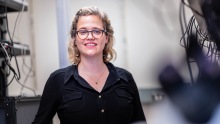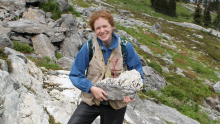A well-established family of drugs used to treat parasitic diseases is showing surprising potential as a therapy for tuberculosis (TB), according to new research from University of British Columbia microbiologists.
The findings, published online this week in the journal Antimicrobial Agents and Chemotherapy, are based on in vitro tests of the avermectin family of drugs. Discovered nearly 40 years ago, the drugs are commonly used in the developing world to eliminate the parasitic worms that cause river blindness and elephantiasis but have been thought to be ineffective against bacterial diseases. The UBC study shows that in the lab, the drugs actually killed the bacteria that cause TB, including drug resistant forms.
“These drugs are cheap, routinely produced by pharmaceutical companies, and, in many cases, approved for humans use,” says UBC researcher Santiago Ramón-García, a co-author on the paper. “So the jump from lab bench to clinic could be much quicker.”
“In addition, the drug concentrations effective in vitro indicate members of this family might be very valuable additions to the small repertoire of drugs we have to fight multi-drug resistant TB, which have very low probabilities of being cured.”
The international collaboration was lead by scientists in UBC’s Department of Microbiology and Immunology associated with UBC’s Centre for Tuberculosis Research and the Neglected Global Diseases Initiative.
“This underscores the great potential for investments in research to find new uses for approved drugs or synergistic drug combinations,” says co- author and UBC microbiologist Charles Thompson.
Further studies are needed to assess the drugs’ clinical application for treating TB. UBC researchers are now working with animal models to determine effective dosage levels and regimens. They will also study whether avermectins could be combined with other drugs to create effective therapies.
Musqueam First Nation land acknowledegement
We honour xwməθkwəy̓ əm (Musqueam) on whose ancestral, unceded territory UBC Vancouver is situated. UBC Science is committed to building meaningful relationships with Indigenous peoples so we can advance Reconciliation and ensure traditional ways of knowing enrich our teaching and research.
Learn more: Musqueam First Nation
Faculty of Science
Office of the Dean, Earth Sciences Building2178–2207 Main Mall
Vancouver, BC Canada
V6T 1Z4


